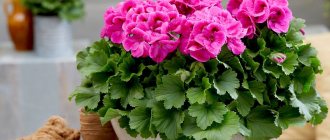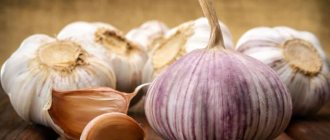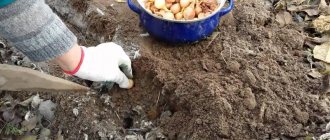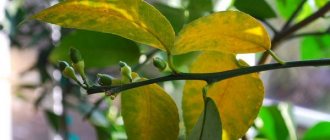Seasonal color changes of thuja
In the winter months, the species plants of western thuja (Thuja occidentalis) and thuja (T. plicata) acquire a golden-bronze color. The needles of the Brabant, Columna and Holstrup varieties are only slightly brown, but the beautiful, lush needles of the Smaragd variety retain their rich green hue even in severe frosts. The darkening or browning of thuja needles is a kind of protective reaction to cold weather and adaptation to the cold winters that prevail in its homeland - in the western and eastern parts of North America.
Latest articles about gardening
With the arrival of spring and the beginning of sap flow, such needles again gain a rich green color. If this does not happen in the spring, you are faced with a more serious problem than the natural physiological characteristics of the thuja. But you need to remember that in the spring, sunburn of the needles may occur on the thuja.
Biological reasons
Thuja needles may also begin to turn yellow due to the adverse effects of certain living organisms on the plant:
Let's talk about each of them separately.
Animal influence
Some animals mark their territory using urine. The thuja plant can also become a kind of “border pillar”. In this case, subject to regular contact with urine, the bark of the tree and its needles turn black or, less commonly, turn yellow and then dry out.
Insect pests
Also, the reason why thuja needles turn yellow can be various insect pests that parasitize the plant:
- Thuja aphid.
- Bedbugs.
- Thuja false scales. They look like balls or large brown buds, reaching a diameter of up to 3 mm.
- Juniper scale insect. The parasite is located on the lower part of the base of the current year's shoots.
- Mealybug. It can be identified by the presence of a white cotton-like formation at the base of the branches.
- Mining moth leads not only to the yellowing of the thuja, but also to the death of the tops of its shoots. The presence of a parasite is indicated by the presence of holes in the needles.
- Mayfly-like bagworm. The parasite causes severe needle drop. Its presence can be diagnosed by the presence of hard silk bags hanging from the shoots, up to 50 mm long.
- Spider mite. Due to its effect, yellow spots appear on some needles, then they turn brown, become covered with cobwebs and crumble. The intensification of the process is observed at the end of summer.
- The gray larch leaf roller weaves needles into small cocoons.
- Weevils damage the bark on young thuja shoots, causing the tops of the shoots to turn brown.
- Arborvitae beetles leave behind holes and passages in the tree, under the bark.
Read also: Rebuild a wall in an old house
Pathogenic microorganisms
Thuja can be affected by some fungal and bacterial diseases:
- Buroeschütte. This mold settles on young tree branches. It appears in the form of a black-gray cobwebby coating with dots of fruiting bodies. Yellowed needles stay on the plant for a long time, and thin branches begin to die.
- Stem rot. Manifested by a change in the color of the needles.
- Polypores. Quite large fruiting bodies, up to 400 mm in diameter, appear on the trunk.
- Fungi Phytophthora and Fusarium. In thuja they lead to a softening of the bark on the lower part of the trunk, a change in the color of the needles (becomes gray). The wood under the affected bark is brown, the root system becomes brittle and brittle.
In any case, you should figure out why the thuja needles turn yellow before doing anything. After all, only by establishing an accurate diagnosis can high-quality and effective treatment be carried out.
/ May 01, 2021 at 09:13 pm
Why does the thuja turn yellow and what to do: causes and methods of restoration. A very sad sight is presented by the yellowed, browned, and sometimes covered in places with a grayish coating of evergreen thuja branches.
You should react extremely responsibly to such an obviously painful state of a beautiful tree in spring or autumn.
What you will learn from this material:
Insufficient care for thuja
With the right location, thuja requires minimal care, but reacts very strongly to insufficient watering (you need to water a bucket once a week, and during a drought - 2 buckets twice a week) or waterlogging of the soil (the roots rot). And if the thuja is planted in a sunny place, then the soil around the tree should be mulched to protect it from moisture loss and sunburn.
It is mandatory for a newly planted tree to install a fence to prevent animals from defecating on it.
Preventive work against drying out of thuja
In the southern regions, all coniferous trees must be shaded to prevent direct sunlight from hitting them, which can cause burns. To do this, you can use burlap, any cotton material, craft paper or camouflage fine mesh.
The shelter must be breathable so that the thuja receives a sufficient amount of oxygen necessary for the growth and development of the plant.
The soil around young seedlings should be sprinkled with soil from under adult plants. This soil should contain needles that will protect the tree from garden pests and replenish nutrients. For prevention, carefully treat all crops with Epin or Zircon.
In order for coniferous trees to grow and develop well, the soil must be moderately moist. Watering should be done 2-3 times a week and at least 8-10 liters of water should be poured under each bush.
Watering thuja. The illustration for the article is used under the standard license ©v-ogorode.ru
To prevent yellowing of thuja needles, you should properly prepare for the upcoming winter: at the beginning of autumn, stop feeding the plant, but continue intensive watering.
To protect the root system from frost, in November the circle around the trunk should be covered with bark, spruce branches or fallen leaves (it is recommended to pour at least 15 cm of mulch). Over the course of several months, it will rot, releasing heat and warming the root system, as well as filling it with the necessary nutrients.
On the eve of winter, the branches of young plants must be carefully collected in a bunch, tied with a rope around the trunk and covered with agrofibre.
With the arrival of a thaw, the first rays of sunlight can become dangerous for thujas. Therefore, you should not immediately open the trees; 2-3 hours a day of their exposure to the sun is enough. Gradually, this time must be increased, and when the plants are completely accustomed to the new conditions, the shelter can be removed.
Excessive or insufficient watering of thuja
Thuja loves well-moistened soil, but cannot tolerate stagnant moisture, as well as close groundwater. The recommended frequency of watering for thuja is once a week, during dry periods - twice a week, and in the first month after planting - daily. The volume of water for irrigation, under normal conditions, should be a bucket per tree (in unfavorable conditions - two buckets). In order for moisture to be retained in the soil, but not to stagnate, the soil in the tree trunk circle must be mulched: in winter with sawdust, in summer with peat. Excessive watering and stagnation of moisture for more than two weeks lead to rotting of the plant roots and contribute to the development of fungal diseases. With insufficient watering, the thuja turns yellow and dries out. She loves thuja and periodic sprinkling, especially in the summer heat. It is better to do this in the evening so that drops on the needles do not cause sunburn.
Thuja needle burn
In spring, during sunny hours, when the soil has not yet completely thawed and the roots are not functioning, browning of the needles is often observed. Protective measures: Scatter peat chips and ash around the plant to reduce the reflection of sunlight. Use a special net to shade the plant. In the fall, moisture-charging watering is carried out, since in winter the needles lose a lot of moisture in the cold. In the spring, immediately after the snow melts, start actively watering. To increase survival rate and strengthen immunity, spray the plant with Epin (0.01%) and water the root with Zircon (0.01%).
Late blight on thuja
The most dangerous fungal disease for thuja on the site is late blight. The reason for its appearance is most often the proximity of groundwater or poor soil drainage. The fungus settles on the roots of the plant and gradually affects the entire tree. The trunk becomes loose closer to the surface, the needles and bark change color to gray, and over time the tree dies. Fungicides are used for prevention; it will not be possible to cure late blight if the root system is damaged - it is better to dig up the plant and burn it. Fungal spores live in the soil for a long time, so the soil needs to be replaced or disinfected.
Brown shoots on thuja
This disease occurs mainly in early spring. It manifests itself as yellowing of some scales. If nothing is done, the shoot will first turn brown and then die. For treatment, the affected shoots must be cut out. After which the tree must be constantly sprinkled with limestone and fed. From mid-summer to the end of September, thuja should be sprayed with foundationazole.
By the way, browning and yellowing of the tops of the plant can occur if the access of nutrients from the roots to the crown is disrupted. This happens for the following reasons:
Fusarium or tracheomycosis. In this situation, you should water at the root and spray the thuja crowns with a 0.2% solution of foundationazole. Instead, you can use another fungicide, for example, Abiga-Pik, carticide or HOM. Treatment with zircon, which improves the ability to resist fungal diseases, will also help save thuja.
Pests of thuja
The thuja false shield is a small insect that has a light yellow color; when an individual dies, the larvae remain under the false shield (skin), which is where the name comes from.
Signs of disease: 3-5mm are located on the back of the needles. semicircular individuals. The thujas begin to fade, the needles partially dry out, clearly standing out from the general appearance.
Methods of control and prevention: Twice a year in the spring in early May to mid-June, alternating every 7-12 days (depending on the weather) Komandor - Aktaru - the last two times Champion fungicide. In the fall it is better to apply Decis, mid-August to the end of September (every 2 weeks), the last treatment is also with Champion.
The spider mite is an insect that is especially dangerous during hot summer periods; one female can bear up to 6 generations of larvae. It is the larvae that damage the needles.
Signs of disease: the presence of abundant thin cobwebs on the shoots. Looking closely at the thuja scales, you can see many small yellow spots, and then brown dying areas. The damage caused is especially visible towards the end of summer and beginning of autumn.
Methods of control and prevention: in hot weather, Actofit can be used several times for prevention. If you discover a disease, use Actellik during the same period with an interval of 2 weeks, and Actofit two additional times after 10-12 days. In the spring of next year, at temperatures above +5 degrees, use Actellik 2-3 times with an interval of 2 weeks. To quickly restore color and improve growth, use fertilizers for conifers with the addition of sulfuric acid magnesium.
Pests
Despite the fact that thuja has a strong immune system, it still cannot resist some diseases and pests. The most dangerous parasites that are not against profiting from it are spider mites and moths.
Spider mite
Spider mites are small in size, so they are difficult to notice. Mostly green parasites are found, sometimes you can see orange or red individuals. The main sign that the thuja has been attacked by this parasite is the web.
Spider mite
Insects multiply quickly, six generations can appear over the summer, they will quickly suck the juice from the thuja, and it will dry out. To avoid the death of the bush, you need to start treatment at the first symptoms of damage. If there are few parasites and they have just begun to appear, then you can use tinctures of dandelion or garlic. In advanced situations, it is necessary to treat the bush with chemicals. In the fight against spider mites, actellik, fitoverm, neoron, skelta, etc. are suitable.
Moth
Brown needles or death of the top of the thuja often occurs due to the larvae of the moth. To lay its eggs, the parasite gnaws through the foliage of pine needles. It is very difficult to notice the pest due to its small size. The moth barely reaches 4 mm.
Note! To prevent laying, thuja is sprayed with preparations containing pyrethroids at the end of June. These can be anti-mite mosquito, anti-mite tornado, etc.
If a yellow thuja grows in your yard, don’t be upset right away. In any case, no matter what happens to the bush, this is not a reason to give up on the tree and calmly watch how it dies. In most cases it can be cured. Every effort must be made to ensure that this green perennial gains strength and pleases the eye with its greenery again.
Measures necessary for caring for thuja
A very important step for preserving thuja is its regular spraying with water. During the growing season, it is necessary to loosen the soil of the root circle to a depth of ten centimeters, and fill the root circle itself with peat chips or wood chips. This mulching will protect the roots from overheating and drying out in hot weather, and from freezing in winter.
To prevent the death of a tree, you should pay attention to the root trunk: it should not rise too much above the ground, but deepening also negatively affects the health of the plant. To revive the tree, its roots are well watered, the leaf part is vigorously sprayed with water with the addition of Epin. To water the rhizomes, you can add growth stimulants “Zircon” or “Ecogol”.
Apply 20 g of “Buyskoye Coniferous” fertilizer along with peat under each plant.
Plants, like people, experience stress during transplantation and adverse weather conditions. Treat the crown with an anti-stress drug 3 times a week (Zircon mixed with a Cytovit tablet). This mixture can be used to water the roots as a replacement for Kornevin and Heteroauxin.
In mid-spring, immediately after the snow melts, spray the needles for the first time with diluted Epin, ten days later with Zircon, and ten days later with an infusion of dry manure - mullein (half a glass per 5 liters of water).
A couple of handfuls of soil with mycorrhiza (fungi, microorganisms, bacteria and pine needles) from a coniferous forest will help restore the plants. Apply powder under each tree trunk, but do not overdo it and protect the nature of the garden from unnecessary pests.
Shade plants on bright spring days, protect young needles from burns. These measures will help conifers recover faster.
Every month during the summer, carry out prophylactic heavy spraying of all branches of coniferous plants with Zircon or Epin solutions.
Many gardeners often encounter the problem of yellowing or drying of needles on thujas and caparis trees. We will try to explain the reasons and ways to combat this scourge.
Natural natural changes
From time to time, thuja needles turn yellow in the fall, because at this time its life span ends. The needle lives for about 3-6 years, then it begins to turn yellow and dies. A new one grows. And so on. In this case, some branches turn yellow and dry inside the crown around the trunk. There is no reason to worry, you just need to carefully clean the plant of dried needles.
The second natural reason for changes in the color of needles is seasonal color change. This happens in late autumn-winter. Darkening and browning of needles (almost brown) is a protective reaction to a downward change in temperature. Western thujas (almost all varieties except Smaragd) acquire a bronze color in winter. With the arrival of spring warmth, the needles again acquire their usual color. Only frosts from -30 degrees pose a real threat; at extremely low temperatures the plant can die.
Care errors
If the needles turn yellow and dry out in spring or summer, the reason may be due to improper care. The composition of the soil often has a great influence on the condition of the plant. It is wrong to plant thuja on sandy soil, where water quickly drains into the lower layers; on clay soil, where the structure is dense, there is not enough oxygen and the root system cannot develop normally; Planting in low areas with stagnant water, where the root system becomes waterlogged and rots, is also harmful. The ideal soil for thuja is well-drained, but moist for a significant part of the year (turf with the addition of peat and river sand). A plant that was planted several years ago needs to be fertilized regularly (special fertilizers for coniferous plants). If there is a lack of iron in the soil, the needles on individual shoots turn yellow or even white. With a lack of phosphorus, young needles acquire a reddish-purple hue, and with a lack of nitrogen, thujas grow much worse, become weak and stunted. Animal urine also has a very bad effect on the condition and appearance of plants. The needles at the points of contact acquire a black tint.
Diseases
Sometimes, after the snow melts, a disease called “brown schutte” is discovered on young thujas. It manifests itself as follows: a black-gray cobwebby coating of the comb forms on the brown dead needles. The needles do not fall off for a long time, thin branches die off. In the spring, to prevent fungal diseases, you need to spray with Fitosporin-M every 3-4 weeks.
Fungi can also settle on thuja branches, destroying the bark tissue and vessels of the branches, which leads to necrosis. In this case, the needles also change color: they turn red, gray, brown, and not evenly, but in spots, which then merge. Fungal spores in the form of dark spots, growths or tubercles can be found on trunks and branches.
Fungal diseases can also affect the trunks and roots of plants. Damage most often occurs on clayey, poorly drained soil, with frequent stagnation of water. To treat necrotic diseases and vascular wilt in spring and autumn, plants are sprayed with Abiga-pik or HOM. In case of severe damage, treatment can be carried out in the summer. To combat stem rot, the affected areas are cleaned, disinfected with a 1% solution of copper sulfate and covered with garden pitch.
Pests
If the needles have turned brown with a gray coating and ants are crawling on them en masse, this indicates that the plant has been damaged by sucking insects. For example, thuja aphids, bugs, thuja false scale or juniper scale. Thuja false scales look like large brown buds, and juniper scales look like small scars. They are attached at the base of the shoot. If cotton-white formations are found at the base of the branches, this is a mealybug. The drug "Karbofos" will help to cope with these pests (spraying in early spring before the buds open). During the summer you can spray with Actellik or Rogor. The larvae of the gray larch moth can weave thuja needles into small, sloppy cocoons; damaged needles turn yellow. If, when peeling the bark, you find strangely shaped passages and holes on the wood, then the plant is infested with stem pests. The drugs “Fufanon”, “Aktellik”, “Decis Profi” (treatment in May-June) help against these insects.
Anti-stress
In any stressful situation (transplantation, pruning, disease, summer drought), the plant must be supported with the help of anti-stress drugs “Zircon”, “Megafol”, HB-101. Treatment is carried out by spraying along the crown several times during exposure to stressful conditions.
Thuja is an evergreen beauty that proudly and majestically rises in many garden plots. The plant is quite compact, it reaches a height of no more than ten meters (in nature it can reach up to twenty meters!). This bright representative of the Cypress family easily tolerates a haircut and is very unpretentious in care. However, very often gardeners notice that the evergreen beauty begins to slowly lose its exquisite natural color. Yellowing of thuja is a very, very common phenomenon. Timely identification of the cause of the color change will stop the spread of yellowness throughout the plant.
What to do to save thuja from drying out
Take a pruner and ruthlessly clear the plant of dry, reddened needles. It will not fall off on its own, and the tree will never be cleansed. Pruning with confidence. Sometimes the “final” tree looks terrible, having lost half of its needles.
- Cut off the growing point (shorten the crown of the plant by 10-15 cm).
- Buy acidic peat (with a pH of 3-4) and spread it in a thick layer under the plant. Mix the peat moss into the top layer of soil.
- Apply “Buyskoe coniferous” fertilizer together with peat - the norm is 20 g per plant.
- In the spring, spray the needles with diluted Epin, ten days later - with Zircon, after another ten days - with mullein (dilute 1/2 cup in 5 liters of water).
- Admire the result - a partial recovery will occur by the end of summer. The needles will turn green and grow vigorously.
To prevent the thuja from drying out and to look great, it is necessary to spray it with a solution of “Zircon” or “Epin” for prevention. Spray generously so that the needles drip.
You need to repeat spraying the thuja once a month.
The photo shows a yellowed thuja after winter
Causes of yellowing of thuja
Seasonality
In most cases, the thuja color, which is unusual for plant growers, can be explained by a completely understandable phenomenon. The yellowing of the green beauty is often explained by such a phenomenon as natural changes. In the gymnosperm plant, like other representatives of the Cypress family, the crown, the area around the trunk, and the lower tiers turn yellow in the fall. In addition, with the onset of winter, thujas of different varieties can also change their color. And there is nothing unnatural about this. For example, folded thuja acquires a bronze tint, Siberian thuja acquires a golden color. Changing color is a natural reaction of a tree to temperature changes. With the onset of spring warmth, the thuja again acquires its bright, juicy green color.
Mistakes when transplanting thuja
Thuja is quite picky about the composition of the soil in which it will be grown. In peaty soils, the root system of a coniferous plant often rots, which may be the reason for the yellowing of the thuja. But on clay soils, the roots of the evergreen beauty will not be able to fully develop due to the fact that such soil contains very few nutrients. Sandy soils are also not suitable for planting conifers. It is ideal if a well-drained area of the garden is chosen for the thuja. The composition of the soil should be turf, with an admixture of sand and peat.
Another possible reason for the yellowing of the thuja is the wrong place for planting the seedlings. For example, young plants abruptly planted in the sun from shade or dense planting, in most cases turn yellow within the first two days after transplantation. This is due to the fact that a sharp change in light can contribute to the burning of the thuja.
If a gardener deepens the trunks and branches of a tree too much, this can negatively affect not only the color of the plant, but also its well-being. The thuja will begin to slowly dry out, the root collar will be exposed, and the tree will eventually die.
Also, planting thuja too often can have a negative effect on the color of a coniferous plant. If two plants come into contact with each other, this may cause the needles to yellow and fall off at the points of contact. Therefore, experienced gardeners plant thujas at a distance of one to one and a half meters from each other.
Planting plants too close to the roadway can affect the change in thuja color. Reagents can negatively affect not only the color, but also the overall development of plants.
Improper care of thuja
The main mistake in caring for thuja is the wrong watering regime. Insufficient irrigation of the soil around the plantings can cause yellowing of the thuja. In this case, there is only one way out - to adjust the watering regime, and then the thuja will return to its previous rich green hue.
The incorrect mineral composition of the soil can negatively affect the color of the thuja. For example, yellowing of the thuja may indicate a lack of iron in the soil. This problem is easily solved by adding complex mineral fertilizers to the soil.
Diseases
Very often, thuja acquires a yellowish color due to a disease such as a fungus. The gardener will be able to judge the unnatural changes occurring in the plant by the yellowed color of the thuja for no apparent reason. In this case, the thuja must be treated with a broad-spectrum systemic fungicide - foundationazole. Particular attention should be paid to the crown, trunk, and soil treatment near the tree.
Pests
Often the cause of yellowing of the evergreen beauty is the destructive influence of insects. Very often, the color change of the thuja is affected by the leafminer moth. The pest is capable of making microscopic passages in the needles. This can be easily calculated by carefully examining the damaged areas of the tree. Also, the evergreen beauty can suffer from leaf rollers and spider mites, thuja aphids, false scale insects and bugs. All of them are capable of influencing the color change of the plant. When the first signs of pests are detected, it is necessary to immediately treat the thuja with specialized preparations (pesticides and their analogues).
A change in thuja color is always an alarm signal for a gardener. In this case, you need to identify the reasons for the color change and promptly take measures to restore the natural state of the evergreen beauty!
Even the most unpretentious ornamental plants sometimes upset their owners, get sick, and lose their attractive appearance.
Our readers ask the question: “An 8-year-old thuja on the site has begun to turn yellow, what is it missing, what should I do?” We turned to a specialist for help.
It is possible to accurately answer the question about the reasons for the yellowing of the plant only by carefully examining the “patient”. It is necessary to cut the shoots - perhaps the conductive system of the shoots is affected; inspect the bark and branches - a pest or fungal infection has probably settled in, or frost holes have appeared; touch the needles and assess the degree of its death by the characteristic resinous smell. The yellowness that appears should also be associated with weather conditions and possible violations of agricultural practices. There are many reasons for the yellowing of thuja. In this case, we can only make an assumption, and it’s up to the owner to decide what’s going on with the evergreen beauty.
Important!
Yellowing of the thuja may indicate a lack of iron in the soil. Apply mineral complex fertilizers containing the missing element to the soil.
Thuja occidentalis and its many varieties have become very popular with many landowners in recent years. It is good in the garden both in winter and summer, in group plantings and planted singly. There is a misconception that thujas do not suffer as much from pests as deciduous trees. However, some groups of pests can not only spoil the appearance of the plant, but also bring it to complete death, as this is done by leafminer moths. The pest makes microscopic passages in the needles, causing them to begin to dry out.
Leaf rollers and spider mites, thuja aphids, scale insects and false scale insects can affect the change in color of the evergreen beauty. If pests are detected, immediately begin treating thuja with specialized pesticides, for example, Fufanon-Nova is suitable.
Thuja needles may turn yellow before “molting.” Not every year, but, like deciduous trees, conifers shed some of their old needles. Shedding begins in the fall and occurs mainly inside the crown closer to the trunk. This should not be confused with the general change in color of thuja in late autumn. In a number of varieties, this may simply be a natural reaction of the plant to temperature changes; there is nothing to worry about. In spring, the acquired brownish tint will again be replaced by a color characteristic of this species or variety.
Advice
When planting, do not bury the plant trunk or expose the root collar. Otherwise, the thuja will begin to slowly dry out and the plant will soon die.
Too frequent planting can have a negative effect on the color of the needles. If two plants come into contact with each other, this will cause the needles to yellow and fall off at the points of contact.
Thuja will certainly react to violations of agricultural practices. Considering its biological characteristics, it is important to choose a place, prepare the soil and plant it correctly. Soil is precisely the environment in which the main organ of plants is located - the root system. In peat soils, the root system often rots, which may be the reason for the yellowing of the thuja. On clay soils, roots cannot fully develop; sandy soils are also not suitable for planting conifers. It is ideal if well-drained, fairly loose turf soil with an admixture of sand and peat is chosen for the thuja.
Thuja can adapt to excessive soil moisture by placing the root system in the surface layer of soil, but from a lack of moisture it will begin to turn yellow. She loves to take a morning or evening “shower.” And so that the thuja does not turn yellow after winter, be sure to give it a good drink, and do not let its shoots die from loss of moisture in severe frosts.
Low, prolonged negative temperatures in the absence of snow cover can disrupt the functioning of the root system, which is why the thuja will certainly turn yellow. Autumn mulching of the soil in the area around the tree trunk is very beneficial for the plant.
Spring sunburn, received when the snow cover melts, will appear as extensive yellow spots on the crown. It is advisable to cover newly planted seedlings brought from European countries with non-woven material for the winter. This will save them from the scorching spring sun. And do not plant shade-loving species and varieties in bright sun.
In the end, the thuja may simply pick up a fungal infection, acquiring a yellow color for no apparent reason. In this case, the plant must be treated with a broad-spectrum fungicide (“Skor”, “Chistotsvet”, “Keeper”). By the way, such a procedure will not hurt at all as a preventive measure. The crown, trunk and soil around the plant should be treated.
Thuja owes its popularity to its evergreen lush outfit. This plant is a real decoration for
estate plot, park area, city squares. But what to do if your favorite tree turns yellow? How to save him? First you need to figure out why this happens.
Where to buy seeds and seedlings with delivery
We are waiting for you to shop at the NGO “Gardens of Russia”.
Did you like the article? Share with friends on social networks:
Treatment of thujas against diseases and pests - thujas turn yellow and what to do.
Along with services for pruning thujas, cutting thujas and scheduled annual maintenance, we at Garden Academy Moscow treat thujas against pests. For example, if your thujas turn yellow outside or inside, turn brown, turn black, or have manifestations of other thuja diseases or thuja pests, or if you have decided in advance to protect yourself from the manifestation of diseases in thujas by protective treatment of thujas - call us. Our specialists will find out the causes of diseases, draw up a treatment plan and solve this problem. Usually one, two or three treatments are required at intervals of 7 days.
Why do thujas turn yellow and what to do?
There are many reasons for the yellowing of thuja needles. This may be due to various fungal infections, as well as other reasons completely unrelated to diseases. For example, in winter a burn can occur from cold, and in spring from sun.
Pests of thuja and other causes of yellowing of thuja will be discussed in this article. We will look at how to prevent yellowing of thuja needles and how to deal with pests.
Why do thuja needles turn yellow? What ails thuja. About pests of thuja.
Yellowing of thuja is not associated with diseases and pests. It should be remembered that during the winter, thuja produces a special protective red pigment in its needles, which changes the color of the plant from slightly brownish to intensely brown and even pinkish-bronze (depending on the type and variety of thuja).
Yellowing of the top of the thuja indicates insufficient receipt of nutrients due to damage to the root system. This may be due to two reasons. The first reason is an excess of moisture at the level of the root system. This happens in conditions of stagnant water or high groundwater levels. The second reason is damage to the roots by fungal diseases (read on the page: thuja diseases).
Observational experience shows that most often thujas turn yellow due to excess moisture in the soil. For example, it is dangerous to plant thuja in low places where water often stands and accumulates there after melting snow or heavy rainfall. If you know in advance that the soil is prone to waterlogging and stagnation of moisture, you need to either immediately choose another place for planting, or make good drainage in such soil in advance for water outflow. In conditions of waterlogging, the needles of the thuja turn yellow, as the roots become soaked and rot. The rotting process spreads to the bases of the skeletal branches and the plant inevitably dies.
If the thuja begins to turn yellow in waterlogged conditions, it is better to immediately transplant it to another place. According to one of the experts, thuja Smaragd is capable of withstanding spring stagnation of moisture in a layer of water of about 10 cm for a week. However, under such conditions, about 5 - 10% of thuja Smaragd die. However, surviving plants still suffer in the future and are characterized by slow growth. Root soaking is often accompanied by a fungal soil infection that causes fusarium or root rot. As a preventive measure on stagnant soils, use site drainage or choose the right place for planting. Diseased plants are replanted and treated with Bordeaux mixture or special preparations with a similar effect. In professional nurseries, spraying with a 0.2% solution of foundationazole is used against root rot.
Causes of yellowing of thuja and control measures
Thujas themselves are unpretentious, but if the needles begin to lose their color, then it’s time to save the plants. What can cause yellowed needles?
Natural processes
The life of each needle ends after about 5 years. At this age, chlorophyll ceases to be produced, and individual branches or parts thereof begin to turn yellow. This is a natural process. The branches gradually die and fall away, and others come to replace them. In this case, you don't need to do anything. If you don’t like the look of individual shoots at all, then the yellowed parts can be carefully cut off.
Seasonal changes
During winter cold, some varieties of thuja turn slightly yellow. The change in needle color may be slight. This is due to the fact that the plant adapts to a lack of light and extreme cold. In the spring, when the process of sap flow begins and daylight hours increase, the color of the needles is restored. Another reason for spring yellowing of thuja can be sunburn.
Possible mistakes when planting thuja
If the thuja turns yellow after planting, it means some mistakes were made. For example:
- The plant is planted in sandy soil. In this case, moisture does not remain in the upper layers. The cause of yellowing may be its deficiency.
- Thuja lacks nutrients due to the density of the clay soil.
- Peat soils with stagnant water can cause the roots of thuja to rot, causing the needles to begin to lose their color.
If you were able to figure out why your recently planted tree is turning yellow, then it would be a good idea to replant it in suitable soil. The ideal composition for planting thuja contains turf soil with the addition of peat and sand. And don't forget about the drainage layer.
Improper care
If a lot of time has passed after planting and the plant suddenly begins to lose color, then the cause could be improper care. Please note the following points:
- Thuja turns yellow from lack of moisture. Properly organized watering will return your plant to rich greenery.
- Groundwater located close to the surface of the earth can cause soaking and rotting of the root system. To save the plant, it is better to transplant it to another place.
- Exposing or deepening the root collar during planting can cause the bark to die and the entire tree to dry out. The first signs are yellowing of the needles. This reason can be easily eliminated if you dig in or, conversely, release the root collar so that it is located flush with the surface of the earth.
- If the distance between the trees is not maintained during planting, then from constant contact and lack of space they will turn yellow and crumble.
- If a thuja is transplanted from a dense planting directly to a sunny place, then from burns it will begin to turn yellow immediately after planting. It must be remembered that this plant loves shaded places.
- The cause of yellowing can be an incorrectly selected fertilizer or its excess, as well as reagents or salt that is sprinkled on the paths during icy conditions.
- If individual shoots turn yellow, the cause may be a lack of iron. A properly selected fertilizer complex will save your plant.
Animal influence
Plants can be seriously affected by dog and cat marks. First of all, the root system reacts, and only then the problem manifests itself as yellowing of the needles.
Diseases and pests
- After winter cold, thuja needles are often affected by brown mold. Its name is Schutte Brown. The plant should be treated with Bordeaux mixture or carticide. It is recommended to treat thuja several times, maintaining an interval of two weeks.
- Treatment with Rogor-S or Actellik will help cope with aphids.
- To treat fungal diseases, use HOM, commander or cartocide.
If you were able to correctly determine why the thuja is starting to turn yellow, then the plant can be saved and it will delight you with lush greenery for many years.
Fighting thuja diseases
Many summer residents complain that for some reason the thuja in their summer cottage first turns yellow and then dries up. Sometimes darkening of the needles is also observed. There may be several circumstances.
The most common cause of yellow thuja needles is early spring burns.
In spring, sometimes the sun is gloriously hot, and the rays of the sun are reflected from the remnants of the snow cover, and this makes their intensity increase. After winter sleep, the thuja is too weak, its needles are very soft and easily get burns. Therefore, you need to organize a convenient environment:
- Twilight
- Thorough irrigation.
A little time will pass and the plant will turn green. So that such a problem no longer bothers the thuja, at the end of winter it should be covered from direct rays with some kind of dark sealant that allows air flow well. All conifers also suffer from fungal diseases.
For this reason, the thuja also turns yellow and the needles fall off. Pests of the thuja are the thuja moth and the thuja aphid. The moth is destroyed with the help of Cypermethrin, and the aphids with a solution of Karbofos.
What to do if the thuja turns yellow
After planting and throughout the season, thuja should be treated with various bactericidal infusions. You need to monitor the plant, cut out damaged and yellow dried branches in a timely manner.
Expert opinion
Victoria Neima
Be sure to lubricate the cut areas with a 5% solution of copper sulfate. Unfortunately, anti-yellowing treatment alone is not enough. For prevention, spraying should be carried out in late autumn and early spring.
There is another pest of thuja - aphids.
Its appearance leads to yellowing, drying out and falling off of thuja needles. This insect sucks out all the juices from the young bush, thereby damaging the decorative appearance of the thuja. Treatment of thuja again consists of spraying with insecticides.
Every summer resident should take note that at the end of the growing season, almost all dark coniferous species, especially thujas, change their color. Looking at the plant, you get the feeling that the tree is drying out: the needles are darkening or turning brown. It should be remembered that the sign of yellowness is considered a protective reflex to the upcoming drop in temperature and adaptation to winter.











